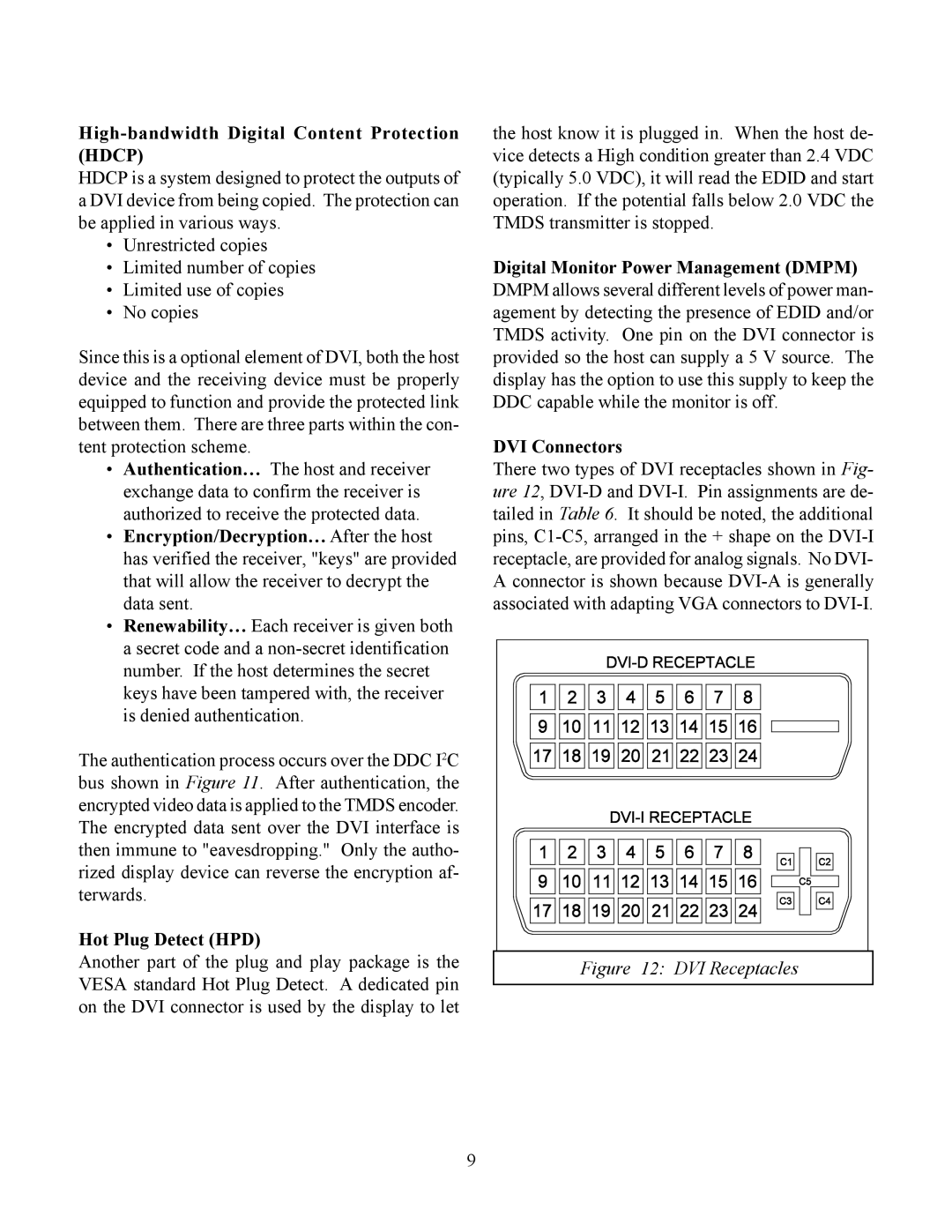
High-bandwidth Digital Content Protection (HDCP)
HDCP is a system designed to protect the outputs of a DVI device from being copied. The protection can be applied in various ways.
•Unrestricted copies
•Limited number of copies
•Limited use of copies
•No copies
Since this is a optional element of DVI, both the host device and the receiving device must be properly equipped to function and provide the protected link between them. There are three parts within the con- tent protection scheme.
•Authentication… The host and receiver exchange data to confirm the receiver is authorized to receive the protected data.
•Encryption/Decryption… After the host has verified the receiver, "keys" are provided that will allow the receiver to decrypt the data sent.
•Renewability… Each receiver is given both a secret code and a
The authentication process occurs over the DDC I2C bus shown in Figure 11. After authentication, the encrypted video data is applied to the TMDS encoder. The encrypted data sent over the DVI interface is then immune to "eavesdropping." Only the autho- rized display device can reverse the encryption af- terwards.
Hot Plug Detect (HPD)
Another part of the plug and play package is the VESA standard Hot Plug Detect. A dedicated pin on the DVI connector is used by the display to let
the host know it is plugged in. When the host de- vice detects a High condition greater than 2.4 VDC (typically 5.0 VDC), it will read the EDID and start operation. If the potential falls below 2.0 VDC the TMDS transmitter is stopped.
Digital Monitor Power Management (DMPM) DMPM allows several different levels of power man- agement by detecting the presence of EDID and/or TMDS activity. One pin on the DVI connector is provided so the host can supply a 5 V source. The display has the option to use this supply to keep the DDC capable while the monitor is off.
DVI Connectors
There two types of DVI receptacles shown in Fig- ure 12,
Figure 12: DVI Receptacles
9
